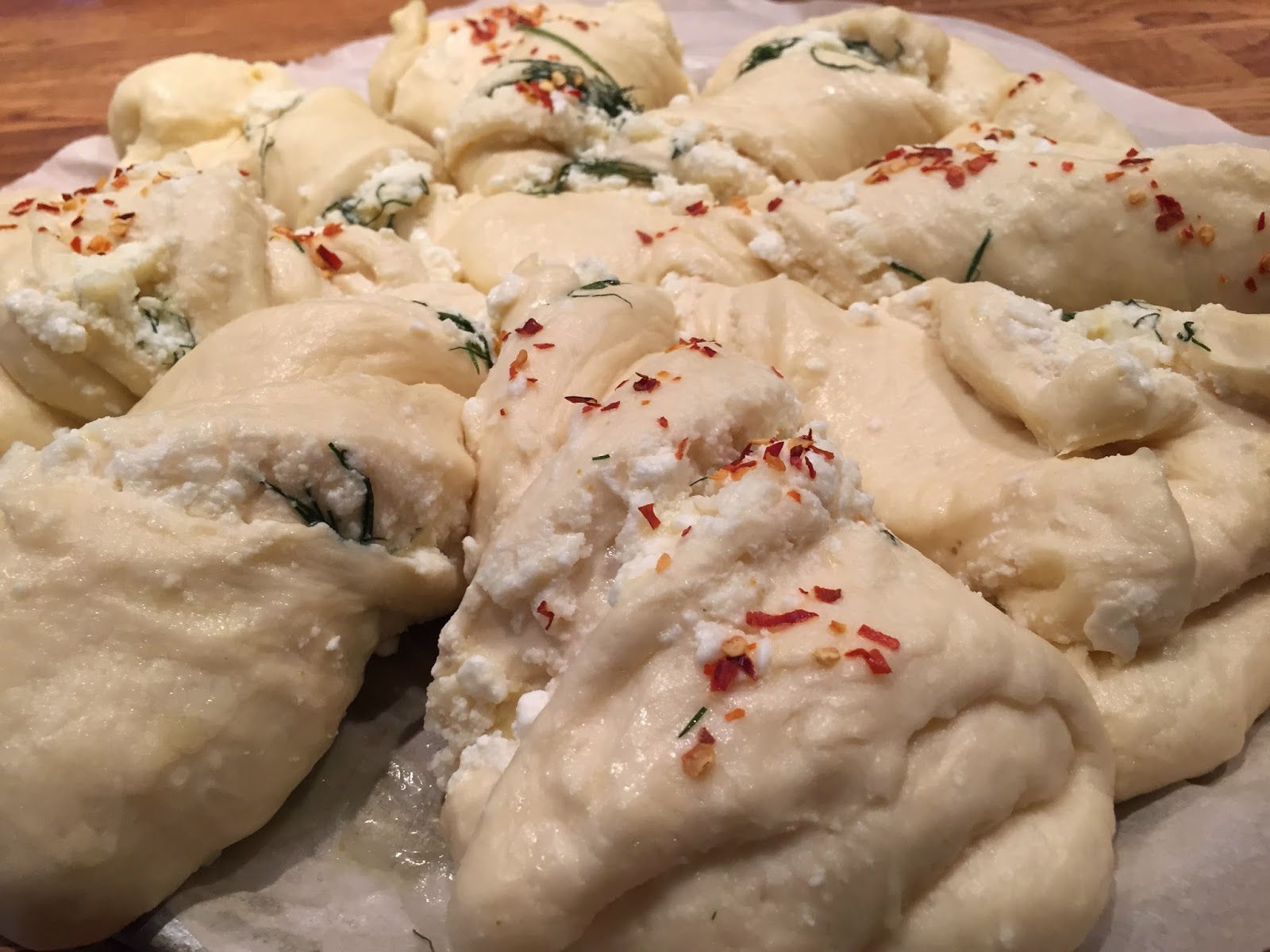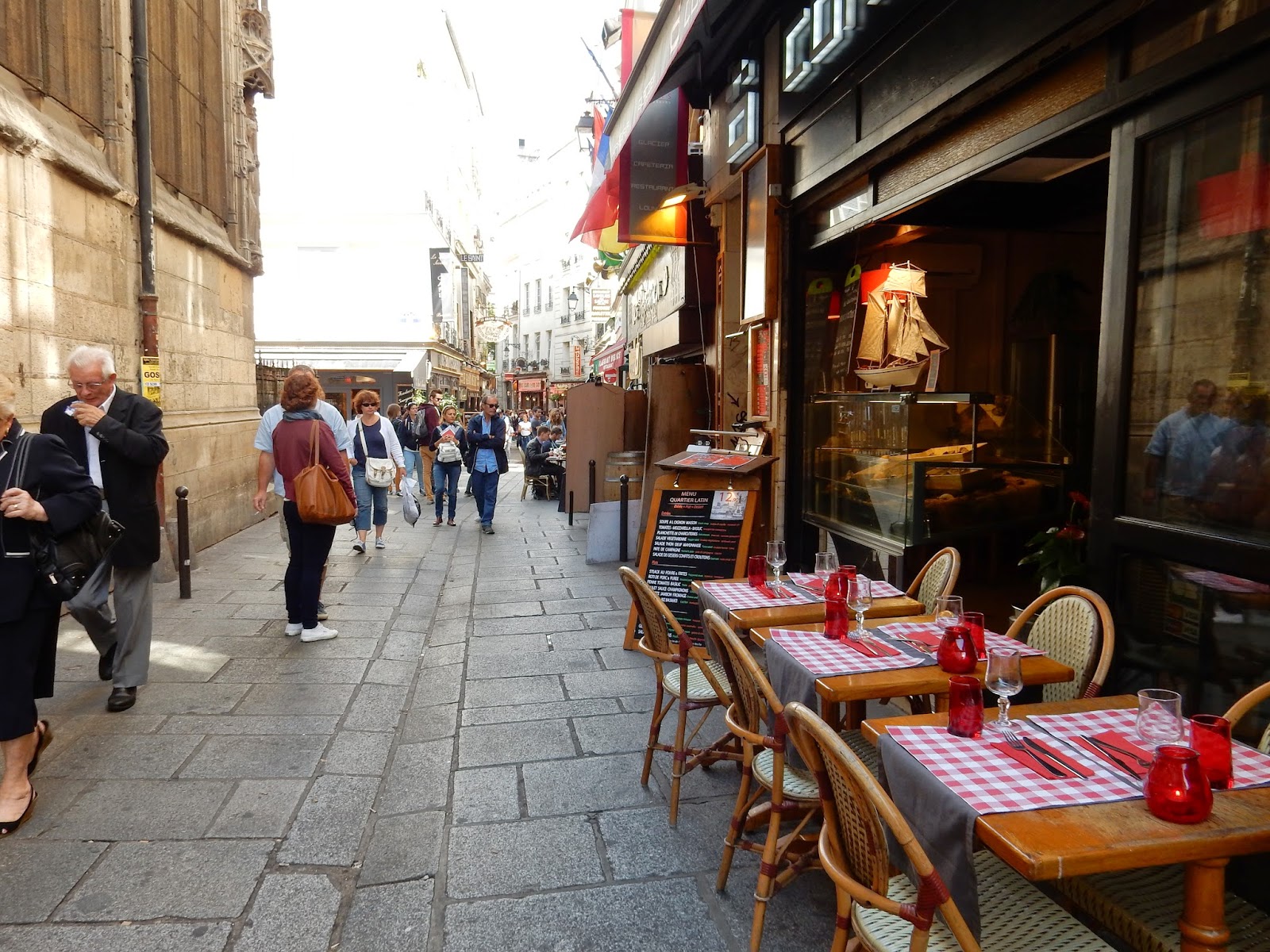When I
retitled this article from previous, 2009, it shows up as an article from today with no pictures!
Last week when my sister was visiting her son, her daughter in law hosted the second annual Christmas cooking bee at her house. Last year we did peroghies but this year pampushky were made as Keele wanted to learn how to make this Ukrainian delicacy. We also made two types of cabbage roll- buckwheat ones and white rice filled cabbage rolls or Pisni Holubts (Meatless Cabbage Rolls) for Christmas Eve. This year there was a set of half year old twins added to the mix that decided they wanted to be part of the goings on. Jase had fun in his jolly jumper, where as Kate decide she would be happier on the floor and would protest when she reached a block, like right against her brother in the jolly jumper. The two year old spent her time admiring her decorated cookies that she had baked with her grandmother.
The Pampushky recipe that we used was out of the Roblin, Manitoba church cookbook that the ladies from that area had compiled. The dough was first made so that it can proof while the fillings and cabbage were prepared for the cabbage rolls. The rice and the buckwheat for the cabbage rolls had been made previously and chopped onion had been fried until soften and a Carmel color.
Cabbage Rolls
Preparation of Cabbage
In preparing the cabbage, use a sharp paring knife to remove the centre core from the head of the cabbage.
In a large pot bring to boil water and then steam the cabbage until the leaves are tender and you can remove the leaves easily without tearing the leaves. Left the cabbage from the water to be able to remove the leaves more easily and return to the pot when you are unable to take of any more of the leaves and repeat the process to further blanch the cabbage.
Chill the leaves in cold water then drain and dry the cabbage leaves. Trim the thick centre vein from the bottom of the leaf
The smaller leaves can be used as is where as the larger leaves are cut in half.
(As an alternative, you can also microwave the cabbage to soften the leaves: Place the cabbage in a bowl with about 2 tbsp of water, cover, then microwave on 'High' for about 12 minutes, depending on the power of the microwave and size of the cabbage head).
My Mom’s cabbage rolls were the size of my fingers and rolled. ..She placed a small portion of the filling into the center of each cabbage leaf and then rolled the leaf around the filling; where as my sister makes little packages by folding the sides over the filling, then rolling the leaf up tightly
Buckwheat cabbages rolls were not served at my Grandmother’s and Mom’s place so I do not make them; Mom always made meatless cabbage rolls in a tomato sauce all year round, whereas my sister’s husband’s family makes buckwheat cabbage rolls for Christmas Eve,
My cabbage rolls are very plain with only white rice filling and no onions. The cabbage rolls are packed into a buttered casserole and a can of tomato soup is poured over top and dabs of butter. . Arrange the rolls with the seam side down in the cabbage lined baking dish.
The casserole is easy to do in the microwave using the auto sensor. If using the oven to bake the cabbage rolls, you need to line your pan and cover your cabbage rolls with the larger cabbage leaves to prevent burning. Bake at a slow oven 325 degrees for 1 to 2 hours until leaves are tender.
Making Pampushky
After the sweet dough had proofed for an hour, the dough was shaped around cooked and some uncooked prunes. The dough was rolled out ¼ inch thick, cut into small rounds with a cookie cutter or small glass. Place spoonful of filling in center, bring dough up around the filling, make small ball and seal very carefully. Place on floured waxed paper and let doughnuts rise about 1 hour. Leave them uncovered to form a crust on the dough as then they will absorb less fat when fried. Fry in hot oil (400 degrees) about 2 minutes on each side. Doughnuts should turn themselves, but some may not and will have to be turned. When golden brown, drain on a rack and sprinkle with sugar when cool.
Mom filled the pampushky with prunes and poppy seed filling. She also used sauerkraut as filling when she made her own sauerkraut. The sweet and sour flavour of sauerkraut complimented the sweet dough. I was practically fond of these triangle filled goodies. Interesting enough this must have been her recipe as I could not find any recipes using sauerkraut as a filling in the sweet dough.
Mom’s pampushky were triangle shaped and the first time I made these, I also shaped them as triangles but they rose so much that they opened up and looked like cow’s lips... However, they were still delicious even though the poppy seeds spilled out and made a mess of the oil. I always used my wok as it requires less oil then a fryer. Last week we did use the fryer, a wedding gift from my Mom’s sister, Mary. In using the fryer, the temperature is controlled better as with each new batch added to be fried the temperature of the oil in the wok drops. However, we did run into problems while using the fryer outside as by having the dough outside it chilled too much and the pampusky took longer to warm up to cook and therefore absorbed more oil.

The afternoon was a productive one, and we enjoyed homemade curried sweet potato and chick pea soup and toasted Pat’s birthday with prosecco that I had brought. However, my sister felt that we had too many projects going and that the visit was not as good as we had making peroghies last year. I guess next year we will be making perogies.
The sweet dough recipe that I use is from “Traditional Ukrainian Cookery” by S. Stechishin which according to Amazon.ca is available for $260.46.
Ingredients
• 2 tablespoons active dry yeast
• 1/2 cup lukewarm water
• 1 tablespoon sugar
• 2/3 cup milk
• 1/4 cup sweet butter
• 1 teaspoon salt
• 1/3 cup sugar
• 2 whole eggs, beaten
• 3 egg yolks
• 1 teaspoon vanilla
• 1 grated lemon, rind of
• 4-5 cups all-purpose flour, as needed
• prune jam or poppy seed or cherry preserves or apricot jam
• lard (for deep frying) I use canola oil
• extra finely granulated sugar
POPPY SEED FILLING
• 3/4 lb poppy seed
• 1/2 cup unsalted butter
• 1/2 cup honey
• 3 tablespoons light sweet cream
• 1/2 cup chopped raisins
• 1 grated lemon, rind of or 1/2 orange
• 1/2 teaspoon cinnamon (to taste)
Directions
POPPY SEED FILLING: The night before, cover poppy seeds with boiling water and let them soak until the following morning, or wash and parboil for 30 minutes just before grinding. Drain thoroughly and grind in a poppy-seed grinder, or put them through the finest blade of your meat chopper 3 or 4 times. I use a coffee grinder for this. (or buy ground poppy seeds if there is a store near you that prepares them, but be sure they are not rancid.).
Cream butter with honey. When well blended, combine with cream, poppy seeds and remaining filling ingredients. (Some people prefer to omit the butter and to cook the ground poppy seeds with 2 cups milk and the honey until the mixture is thick. The other ingredients are then stirred in.).
FOR THE DOUGHNUTS: Sprinkle yeast into warm water, add 1 tablespoon sugar, cover lightly and set aside in a warm place for 5 to 10 minutes, or until mixture. Scald milk and stir in butter, salt and sugar. When butter melts, cool milk to lukewarm. Combine with beaten eggs and yolks and yeast mixture, vanilla and lemon rind. Gradually beat in enough flour to make a medium firm dough that is still pliable. Knead until smooth and elastic—about 10 minutes. Place dough in a floured bowl, dust with flour and set to rise in a draft free corner until double in bulk—about 1 1/2 hours. Punch dough down and let it rise again until doubled.
Turn dough onto a floured board and roll out to 1/2 inch thickness. Cut into circles with a 3-inch round cookie cutter. Place a teaspoonful of filling on half of the circles. Top with unfilled circles and pinch edges closed, using a little cold water to seal them. Let rise, uncovered, on floured board until doubled in bulk.
Fry a few at a time in lard heated to 375°F Turn once so both sides become golden brown. Allow about 6 minutes for frying each batch. Drain on paper towel and sprinkle with sugar . Makes about 2 dozen doughnuts.






























































